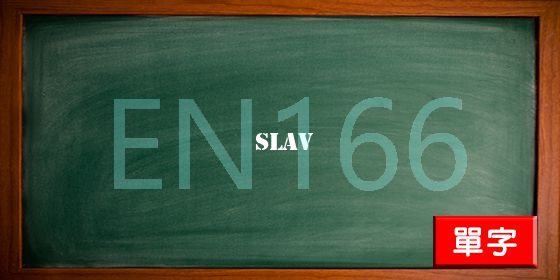slav n.斯拉夫人;〔the Slavs〕斯拉夫民族。adj....
n. 斯拉夫人;〔the Slavs〕斯拉夫民族。 adj. 斯拉夫民族的;斯拉夫語的。 n. -ist “jugo-slav“ 中文翻譯: adj. 南斯拉夫(人)的(=Yugoslav)。 n. 南斯拉夫人。 “slav levies“ 中文翻譯: 斯拉夫應征兵“the slav nationality“ 中文翻譯: 斯拉夫族“slautnoye“ 中文翻譯: 斯勞特諾耶“slava“ 中文翻譯: 光榮級; 斯拉娃; 斯拉瓦河“slaute“ 中文翻譯: 敬禮“slava class“ 中文翻譯: 光榮級“slaung“ 中文翻譯: 斯拉翁“slava dosedel“ 中文翻譯: 斯拉瓦多塞杰爾“slauhter“ 中文翻譯: 魔劍圣“slava fishing boat co“ 中文翻譯: 光榮漁船公司“slaughterous“ 中文翻譯: adj. 好殺的,兇暴的,殘忍的;破壞性的。 adv. -ly
slave |
|
3 ) the national question in yugoslavia and the international relation after the cold war . the author ' s main views are listed following : the first , the whole yugoslavia had divided into three parts : the catholic civilization in west europe , the orthodox civilization of the slav and the islamic civilization of the turk from the 16th century 作者主要觀點如下:其一,到16世紀,在南斯拉夫各民族同中有異的基礎上,整個南斯拉夫已分裂為西歐天主教文明、斯拉夫東正教文明和土耳其伊斯蘭文明三大塊,形成南斯拉夫各民族分野與交融同時并存、交錯重疊的狀態。 |
|
Yugoslavia lies in the southern part of european civilization “ fault zone in which the catholic civilization in west europe , the orthodox civilization of the slav and the islamic civilization of the turk exist together 南斯拉夫地處歐洲文明斷層帶南段,西方天主教拉丁文明、斯拉夫東正教文明和土耳其伊斯蘭文明在此三足鼎立,民族文化的交融碰撞造就了南斯拉夫民族問題長期存在的內在文化根源。 |
|
That is due partly to ethnic russians returning to the motherland after the break - up of the soviet union , but also to tajiks , georgians , moldovans and other non - slav citizens of ex - soviet republics moving to russia in search of work 部分原因是俄羅斯少數民族在蘇聯解體后返回祖國,同樣也因為塔吉克人、喬治亞人、摩爾多瓦人和其它前蘇聯共和國中非斯拉夫民族的公民流入俄羅斯尋找工作。 |
|
After independence , though there has been exodus of slavs and other nationalities , the multi - ethnic nature of the five central asian countries has remained the same , which is and has been the source of ethnic problems 盡管獨立后,中亞五國掀起了一股移民浪潮,但這并沒有從根本上改變中亞五國的多元民族格局。中亞國家多元民族格局為民族問題的產生提供了現實的條件。 |
|
Built mainly between the 7th and 19th centuries , it has the oldest slav monastery ( st pantelejmon ) and more than 800 byzantine - style icons dating from the 11th to the end of the 14th century 它建于公元7世紀至19世紀,擁有最古老的古斯拉夫修道院和800多幅11世紀至14世紀末的拜占庭風格的畫像。 |
|
They swayed and sang faintly to the plangent music ? turc and slav together ? in a tableau of fairytale unity 在一個童話般團結的戲劇性場面中,他們? ?土庫曼人和斯拉夫人? ?伴隨著凄切的音樂在搖擺和輕聲歌唱。 |
|
They swayed and sang faintly to the plangent music turc and slav together in a tableau of fairytale unity 在一個童話般團結的戲劇性場面中,他們? ?土庫曼人和斯拉夫人? ?伴隨著凄切的音樂在搖擺和輕聲歌唱。 |
|
Specific dragons are often given turkic names , symbolizing the long - standing conflict between the slavs and turks 確切的龍經常被命名以具有土耳其風格的名字,這是斯拉夫與土耳其長期沖突的表現。 |
|
Early east slavs 早期東斯拉夫 |
|
Her husband is a slav 她的丈夫是斯拉夫人。 |
|
On medieval slav culture 中世紀斯拉夫文化芻議 |
|
They see themselves as a latin outpost in a sea of slavs 與之相反,羅馬尼亞人卻沒有這種感覺。 |

